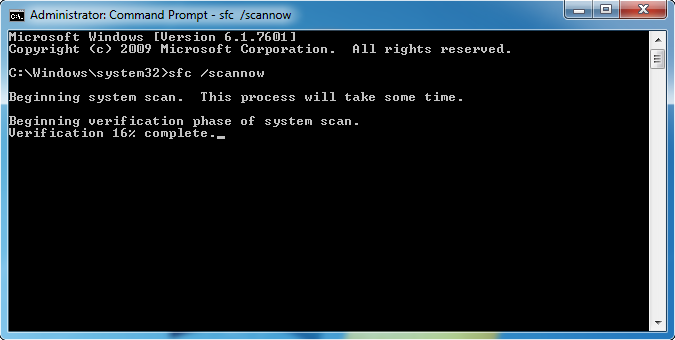Automatic/Startup Repair Couldn’t Repair Your PC
By Timothy Tibbettson 06/15/2023 |
In this article, we're going to look at solutions to address an error message with Startup Repair that states - "Automatic/Startup Repair couldn’t repair your PC. Press Advanced options to try other options to repair your PC or Shut Down to turn off your PC." We have a few possible solutions.
Start-up problems can be tricky because you obviously can't execute commands or troubleshoot if you can't get into Windows. Step 1 is the only solution we know of if you can't boot into Safe Mode.
1: Force Your Computer to do Advanced Repairs
If you can't get into Windows Safe Mode, we only have one suggestion. Let's try and force your computer to go to Advanced Repairs. Start your computer and when you see the Windows logo, hold down the power button to shut it off. Now do this two more times for a total of three. If this works, you should see Advanced Recovery options. Choose Advanced, then Startup Repair.
2: Check Your Drive For Errors
Microsoft System File Checker is a useful, built-in utility that can scan for, and restore, corrupted files in Windows.
Begin by opening an elevated Command Prompt or PowerShell and run both of these commands and wait for them to complete.
DISM.exe /Online /Cleanup-image /Restorehealth
sfc /scannow

These steps are explained in further detail here.
3: Repair MBR and Rebuild BCD
Like above, begin by opening an elevated Command Prompt or PowerShell and run the following three commands and wait for them to complete.
bootrec.exe /rebuildbcd
bootrec.exe /fixmbr
bootrec.exe /fixboot
-=- Advertisement -=-
4: Disable Automatic Startup Repair
We may be able to disable Startup Repair allowing you to boot and run diagnostics. Open an elevated Command Prompt or PowerShell and type in:
bcdedit /set recoveryenabled NO
5: Restore the Registry
We're not fans of tinkering with the registry, but if all else fails, it could work. If possible, back up your registry first.
Open an elevated Command Prompt or PowerShell and type in:
copy c:windowssystem32configRegBack* c:windowssystem32config
6: Reset This PC
Windows 10 users can use Reset their PC by pressing the Windows Key + S, type in reset and click on Reset this PC. Follow the prompts.
Hopefully, you're back in business. We know a lot of people prefer to format and we can understand that if you can't get to Windows, your options are limited.
Similar:
Fix DISM Errors 2, 3, 11, 87, 50, 87, 112, 1726,1393 or 0x800f081f
comments powered by Disqus
Start-up problems can be tricky because you obviously can't execute commands or troubleshoot if you can't get into Windows. Step 1 is the only solution we know of if you can't boot into Safe Mode.
1: Force Your Computer to do Advanced Repairs
If you can't get into Windows Safe Mode, we only have one suggestion. Let's try and force your computer to go to Advanced Repairs. Start your computer and when you see the Windows logo, hold down the power button to shut it off. Now do this two more times for a total of three. If this works, you should see Advanced Recovery options. Choose Advanced, then Startup Repair.
2: Check Your Drive For Errors
Microsoft System File Checker is a useful, built-in utility that can scan for, and restore, corrupted files in Windows.
Begin by opening an elevated Command Prompt or PowerShell and run both of these commands and wait for them to complete.
DISM.exe /Online /Cleanup-image /Restorehealth
sfc /scannow

These steps are explained in further detail here.
3: Repair MBR and Rebuild BCD
Like above, begin by opening an elevated Command Prompt or PowerShell and run the following three commands and wait for them to complete.
bootrec.exe /rebuildbcd
bootrec.exe /fixmbr
bootrec.exe /fixboot
4: Disable Automatic Startup Repair
We may be able to disable Startup Repair allowing you to boot and run diagnostics. Open an elevated Command Prompt or PowerShell and type in:
bcdedit /set recoveryenabled NO
5: Restore the Registry
We're not fans of tinkering with the registry, but if all else fails, it could work. If possible, back up your registry first.
Open an elevated Command Prompt or PowerShell and type in:
copy c:windowssystem32configRegBack* c:windowssystem32config
6: Reset This PC
Windows 10 users can use Reset their PC by pressing the Windows Key + S, type in reset and click on Reset this PC. Follow the prompts.
Hopefully, you're back in business. We know a lot of people prefer to format and we can understand that if you can't get to Windows, your options are limited.
Similar:
Fix DISM Errors 2, 3, 11, 87, 50, 87, 112, 1726,1393 or 0x800f081f
comments powered by Disqus






